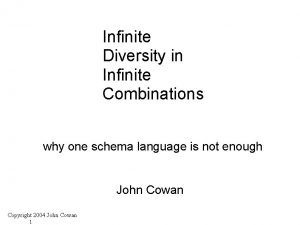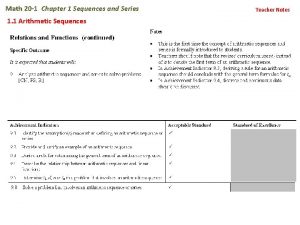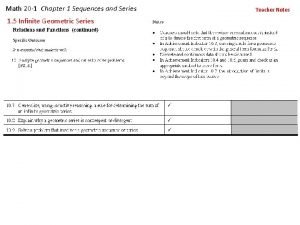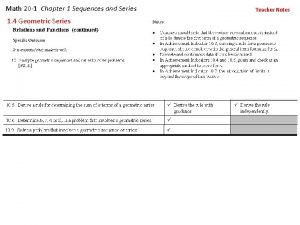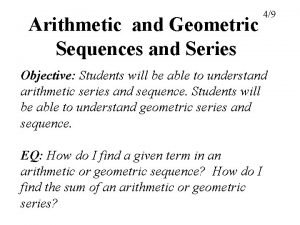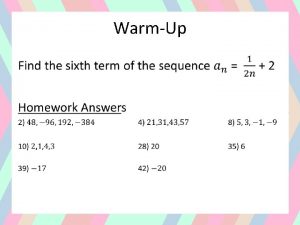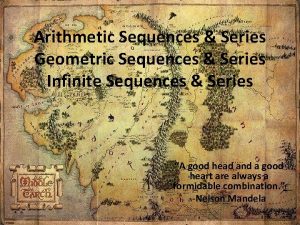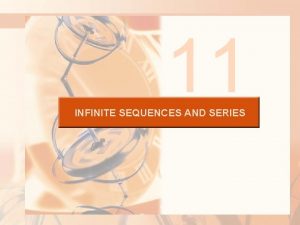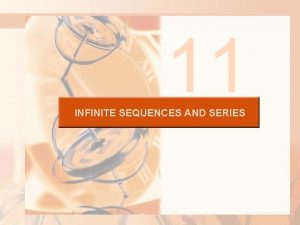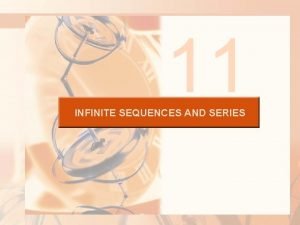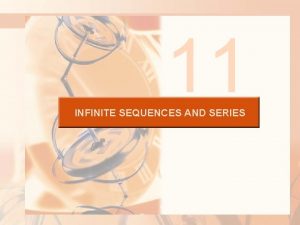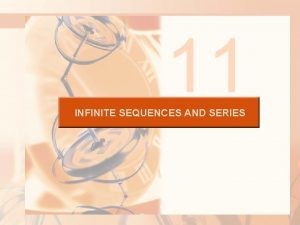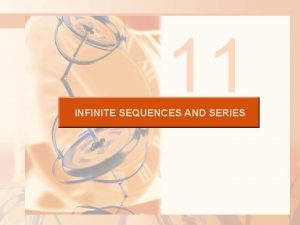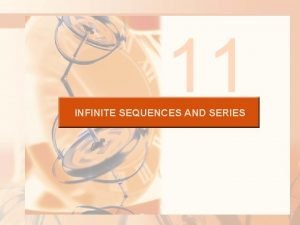Chapter 11 Infinite Sequences and Series Stewart Calculus










- Slides: 10

Chapter 11 Infinite Sequences and Series Stewart, Calculus: Early Transcendentals, 8 th Edition. © 2016 Cengage. All Rights Reserved. May not be scanned, copied or duplicated, or posted to a publicly accessible website, in whole or in part.

11. 9 Representations of Functions as Power Series Stewart, Calculus: Early Transcendentals, 8 th Edition. © 2016 Cengage. All Rights Reserved. May not be scanned, copied or duplicated, or posted to a publicly accessible website, in whole or in part.

Representations of Functions as Power Series (1 of 2) We start with an equation that we have seen before: We have obtained it by observing that the series is a geometric series with a = 1 and r = x. But here our point of view is different. We now regard Equation 1 as expressing the function as a sum of a power series. Stewart, Calculus: Early Transcendentals, 8 th Edition. © 2016 Cengage. All Rights Reserved. May not be scanned, copied or duplicated, or posted to a publicly accessible website, in whole or in part.

Representations of Functions as Power Series (2 of 2) Figure 1 Stewart, Calculus: Early Transcendentals, 8 th Edition. © 2016 Cengage. All Rights Reserved. May not be scanned, copied or duplicated, or posted to a publicly accessible website, in whole or in part.

Example 1 Express Solution: Replacing x by as the sum of a power series and find the interval of convergence. in Equation 1, we have Stewart, Calculus: Early Transcendentals, 8 th Edition. © 2016 Cengage. All Rights Reserved. May not be scanned, copied or duplicated, or posted to a publicly accessible website, in whole or in part.

Example 1 – Solution Because this is a geometric series, it converges when or that is, Therefore the interval of convergence is (− 1, 1). (Of course, we could have determined the radius of convergence by applying the Ratio Test, but that much work is unnecessary here. ) Stewart, Calculus: Early Transcendentals, 8 th Edition. © 2016 Cengage. All Rights Reserved. May not be scanned, copied or duplicated, or posted to a publicly accessible website, in whole or in part.

Differentiation and Integration of Power Series Stewart, Calculus: Early Transcendentals, 8 th Edition. © 2016 Cengage. All Rights Reserved. May not be scanned, copied or duplicated, or posted to a publicly accessible website, in whole or in part.

Differentiation and Integration of Power Series The sum of a power series is a function (1 of 2) whose domain is the interval of convergence of the series. We would like to be able to differentiate and integrate such functions, and the following theorem says that we can do so by differentiating or integrating each individual term in the series, just as we would for a polynomial. This is called term-by-term differentiation and integration. Stewart, Calculus: Early Transcendentals, 8 th Edition. © 2016 Cengage. All Rights Reserved. May not be scanned, copied or duplicated, or posted to a publicly accessible website, in whole or in part.

Differentiation and Integration of Power Series 2 Theorem If the power series then the function f defined by (2 of 2) has radius of convergence R > 0, is differentiable (and therefore continuous) on the interval (a − R, a + R) and (i) (ii) The radii of convergence of the power series in Equations (i) and (ii) are both R. Stewart, Calculus: Early Transcendentals, 8 th Edition. © 2016 Cengage. All Rights Reserved. May not be scanned, copied or duplicated, or posted to a publicly accessible website, in whole or in part.

Example 4 We have seen the Bessel function is defined for all x. Thus, by Theorem 2, J 0 is differentiable for all x and its derivative is found by term-by-term differentiation as follows: Stewart, Calculus: Early Transcendentals, 8 th Edition. © 2016 Cengage. All Rights Reserved. May not be scanned, copied or duplicated, or posted to a publicly accessible website, in whole or in part.
 Alternating series test
Alternating series test Stewart theorem
Stewart theorem Infinite diversity in infinite combinations
Infinite diversity in infinite combinations Chapter 12 sequences and series answers
Chapter 12 sequences and series answers Sequences and series math 20-1
Sequences and series math 20-1 Chapter 1 sequences and series
Chapter 1 sequences and series Sequences and series math 20-1
Sequences and series math 20-1 Arithmetic and geometric sequences and series
Arithmetic and geometric sequences and series Difference between finite and infinite sequence
Difference between finite and infinite sequence 10-2 arithmetic sequences and series
10-2 arithmetic sequences and series Unit 10 sequences and series
Unit 10 sequences and series


